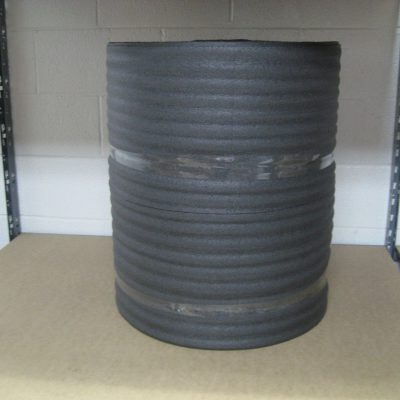Is packing foam or bubble wrap better?
Packaging foam rolls and bubble wrap are both very good for protecting shipments in a wide variety of cases. In fact, most of the time, you won’t see any significant benefits from using one over the other. If you can find a special to save money with either, that’s the best bet.
There is an exception to this. Some items have finishes (like polish) that can be marred by bubble wrap. When dealing with any such items, packing foam is the safer and superior option.

How do you use packing foam?
When using packaging foam to protect a shipment, there are two ideas to keep in mind. First, you want to cover any delicate surfaces with the packing foam in order to prevent scratches or other damage to those surfaces. Anything with a high-gloss finish would fit this description.
To cover such surfaces, simply wrap the item completely with the packing foam and then secure the foam in place with tape.
The second idea prevents items from shifting within a box. You can use the packing foam to fill empty spaces. The goal is to pack items together tightly enough (using the foam as a barrier between items when necessary) that they cannot shift at all within the box. In many cases, internal shifting is how items sustain damage during transit.
If you fill spaces with your foam and prevent any shiftings, everything will be much safer.
Where to buy record mailers?
If you need specialized record mailers in order to ship LPs, many packaging stores carry them. You can also order them directly from Cutting Edge Maintenance, to ensure you’re getting quality mailers at a competitive price.
How to ship an LP ?
When shipping a vinyl record, there are a few things to keep in mind. First, use a record mailer. It adds a lot of protection.
Even when you do use a record mailer, you can add a little more protection to the process with some simple items. For instance, if you still have an inner sleeve for the record, put it in that sleeve first.
If you still have the outer sleeve, you actually don’t want to ship the record inside of that sleeve. Outer sleeves are designed for a loose fit, and they can enable the record to shift in transit, which increases the risk of damage.
Instead, place the record on top of the outer sleeve. You can then wrap them together with packing foam, bubble wrap, plastic wrap, or anything else that seems appropriate. After that, you can sandwich them with stiff cardboard.
Take the cardboard sandwich, and put that in the record mailer. You now have a very protected LP.
If you don’t have the extra cardboard, the LP mailer will still offer considerable protection.
How much does it cost to ship a vinyl record?
Shipping costs vary depending on a lot of different conditions. The point of origin, destination, shipping route, countries involved, courier, and more can all impact prices.
With all of that said, the most important factors for shipping are weight and insurance. Some LPs hold enough value to justify insurance. Others might not.
Excluding the cost of insurance, LPs typically weigh between 40 and 180 grams. That makes for fairly light shipping for any one record. If you’re shipping in bulk, naturally, the price will go up.
How do I ship a lot of vinyl records?
If you need to ship multiple vinyl records to the same destination, it’s pretty easy. First, get a pack of LP mailers, and use one mailer for each record. It adds a lot of protection.
Using the method described previously, wrap and secure each record individually. Once each record is in its mailer, you can stack mailers in a larger box. The mailers will prevent the records from scratching each other.
Be sure to pack the box tight (using packing foam as needed) in order to prevent the records from shifting inside of the box. Even though the mailers prevent them from scratching, records can crack if they back against the side of a box hard or often enough. If you fill the box with packing foam to prevent this, it will be fine.
Once packed, you can ship a single box, making the whole process a lot easier.
Source URL:- https://globalwebhealth.com/cutting-edge-maintenance-faq/





Comments